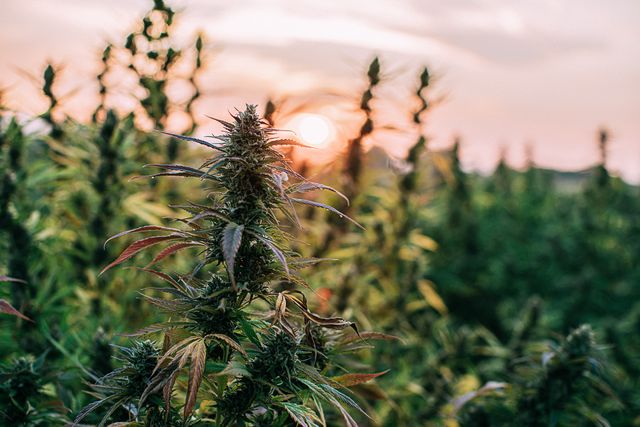Whether you're a newcomer or an old head, you're probably aware that there's a lot of vocabulary to know relating to cannabis. Even the plant itself has many names: cannabis, weed, marijuana, ganja, pot, reefer, dope, etc. While many of these terms (and others) might be mostly insignificant or too deep in the weeds (pun intended) for the average consumer, others can be downright essential to understanding the landscape and products you might be buying.
Of all the terms relating to cannabis, however, there are two that are potentially the most important to know: indica and sativa. This is because these are the names of the two dominant cannabis species — and the basis for understanding the various strains you might come across. We break these two terms down below, offer a bit of background and even offer some answers to other questions you might have related to cannabis.
Cannabis indica, defined
One of the two major subspecies of cannabis, cannabis indica is a plant native to Afghanistan, India, Pakistan and Turkey — especially the arid, windy Hindu Kush mountains (which is where the term "kush" originates, as well). Typically, this type of cannabis has high levels of CBD — often higher than its levels of THC — but it can also be abundant in psychoactive THC.
Physically, cannabis indica is typically stout and bushy with broad leaves, usually around two-to-four feet in height. It is also said to grow faster than sativa and can produce more buds. In regards to this species' effects on the body, it is widely believed that cannabis indica, when consumed, has psychoactive effects associated with deep relaxation and calmness.
Cannabis sativa, defined
The other of the two cannabis subspecies, cannabis sativa is native to Africa, Central America, Southeast and Western Asia. In contrast with indica, sativa has higher levels of THC and lower levels of CBD — although this does not necessarily mean its psychoactive THC content is higher than that of indica, just that its CBD levels are lower.
Physically, cannabis sativa is typically tall and thin with more spindly leaves than its sibling species, able to grow taller at an average of around six feet. Colloquially, it is said that sativa often has a range of psychoactive effects that, when ingested, can make a person feel energized, focused and more stimulated.
What about hybrids? How do they work?
As you might've guessed, a hybrid is when at least one sativa strain and at least one indica strain are combined into a single plant. The idea here is that a hybrid combines the effects of both its constituent strains and offers a broader suite of effects, both psychoactive and otherwise. In layman's terms, it means you can (in theory) get both a body and brain high from a single strain of cannabis rather than having to settle for just one or the other.
Unfortunately, it's not entirely that simple (it never is). While botany is certainly a science, combining these plant species does not necessarily mean you're going to get one that's exactly 50 percent of one and 50 percent of the other. It also doesn't mean the resulting plant will contain the same amounts of THC and/or CBD. It could also have a varying array of other properties to consider, like taste, what it smells like, how it might help with certain medical conditions, etc.
This is the same with other plant hybrids, as well. For instance, when you combine a plum and an apricot, you sometimes get a pluot. However, it's also possible to get a plumcot, apriplum and/or aprium — which all differ in several ways. The same goes for cannabis. Lucky for you, the growers usually do the hard work of figuring out the genetics, and, if they're above board, they'll have the information readily available for consumers to glean. Take Leafly's breakdown of my favorite strains, Forbidden Runtz, for instance.
Are the two cannabis species really that different?
There's actually a lot of debate about this. The idea that the plants are different in their chemical makeup is a bit of an old piece of information — the opinion of 18th-century naturalist Jean-Baptiste Lamarck, in fact. While the colloquial understanding is still that the species are chemically distinct — that indica is relaxing and calming, whereas sativa is uplifting and energizing — it is probably not that simple and might not be accurate at all.
Dr. Ethan Russo, MD, a board-certified neurologist, psychopharmacology researcher, and Medical Director of PHYTECS, a biotechnology company, called this understanding of indica and sativa "total nonsense and an exercise in futility" all the way back in 2016 in this interview from the National Library of Medicine. He also went on to say that "one cannot in any way currently guess the biochemical content of a given Cannabis plant based on its height, branching, or leaf morphology," but that "there are biochemically distinct strains of cannabis," and that "it is essential that future commerce allows complete and accurate cannabinoid and terpenoid profiles to be available."
To make it simpler, the suggestion is that there are different psychoactive effects from cannabis strain to cannabis strain but that these differences do not exist because they are either indica or sativa. Theoretically, it's just as possible to have a relaxing and calming sativa as it is to have an uplifting, energizing indica and everything in between. What's more important, rather than relying on outdated, perhaps incorrect polar distinctions, is understanding the chemical makeup of a given cannabis strain.
Are there really only two species of cannabis?
Nope. Along with cannabis indica and cannabis sativa, there's a third: cannabis ruderalis. However, ruderalis produces a relatively low amount of psychoactive chemicals, especially THC, found in abundance within indica and sativa plants. As such, it is rarely grown on its own, as there's little commercial value to the plant.
It is, however, sometimes used in growing hybrids because it has a useful unique property. Cannabis ruderalis is capable of "autoflowering" — it flowers as a result of age, not light conditions. This makes for a more robust and productive plant, as it is less dependent on growing conditions in regard to how much (and the quality of therein) smokeable cannabis flower it produces.




























